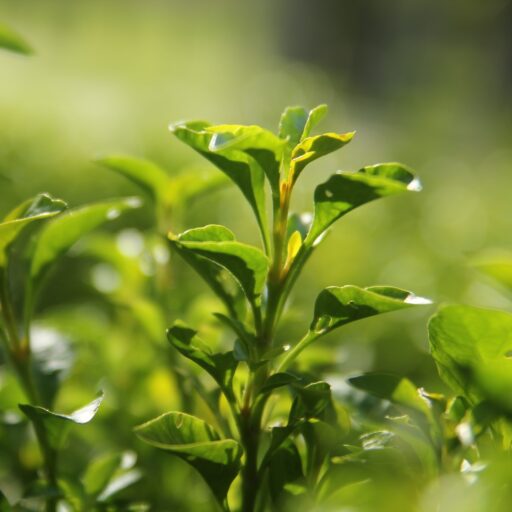Support our educational content for free when you purchase through links on our site. Learn more
Can You Really Grow Your Own Tea? The Ultimate Guide to Homegrown Tea 🍃[2024]
Ever dreamt of sipping a cup of tea brewed from your own garden? It might sound like a whimsical fantasy, but growing your own tea is actually within reach! Sure, it’s not always easy, but with a little patience and the right knowledge, you can unlock the secrets of cultivating your own tea plants and experience the unparalleled freshness of homegrown tea. We’re Growing Teas™, and we believe in empowering every tea enthusiast to take their love for this beverage to a whole new level.
Imagine this: you wake up on a sunny morning, step outside, pluck a few fresh tea leaves, and brew a cup of fragrant, homegrown tea. Sounds pretty incredible, right? But what does it actually look like to cultivate tea? Is it a demanding, time-consuming process, or can even the novice gardener master it? Read on, and discover the answers along with expert tips, tricks, and everything you need to know about growing your own tea.
Quick Answer:
- All true tea comes from the Camellia sinensis plant, offering a wide range of varieties to choose from.
- Growing tea from seed can be long and challenging, but starting with a seedling offers a faster route to results.
- Tea plants thrive in warm, humid climates with slightly acidic soil, so choose a variety suitable for your region.
- Regular pruning is crucial for healthy growth and a more abundant harvest, and you can even shape your plants for a beautiful aesthetic.
- Harvesting is a delicate process, with the first flush yielding the freshest and most flavorful leaves.
Looking for tea plants, seeds, and growing supplies to embark on your own tea-growing journey? Check out our range of products at Growing Teas™!
👉 **Shop Tea Plants: ** Amazon | Walmart | Etsy
👉 Shop Tea Seeds: Amazon | Walmart | Etsy
Table of Contents
- Quick Tips and Facts
- The History of Tea Growing: From Ancient Origins to Modern Practices
- The Science Behind Tea Plant Growth: Understanding the Basics
- Choosing the Right Tea Plant for Your Climate: A Guide to Tea Varieties
- Cultivating Your Tea Garden: A Step-by-Step Guide to Success
- The Art of Tea Pruning: Shaping Your Plants for Optimal Growth
- Harvesting Your Tea Leaves: A Guide to Timing and Techniques
- Troubleshooting Common Tea Plant Problems: A Guide to Identifying and Solving Issues
- The Benefits of Growing Your Own Tea: From Freshness to Sustainability
- Conclusion
- Recommended Links
- FAQ
- Reference Links
Quick Tips and Facts ☕
- Did you know that all true tea comes from the Camellia sinensis plant? 🍵
- You can grow tea plants from seed, but it’s easier to start with a seedling. 🌱
- Tea plants thrive in slightly acidic soil with good drainage. 💧
- Harvesting tea leaves is a delicate process that requires careful timing. 🍃
The History of Tea Growing: From Ancient Origins to Modern Practices 🌿
![Farm Fields of Munnar by Growing Teas hills covered with green plants \]](https://www.growingteas.com/wp-content/uploads/2024/07/photo-1455157823797-3019317cbcf0cropentropycstinysrgbfitmaxfmjpgixidM3w0NDMxOTh8MHwxfHNlYXJjaHw1fHx0ZWElMjBwbGFudGF0aW9uJTIwbGFuZHNjYXBlfGVufDB8fHx8MTcyMDE5MjA0OHwwixlibrb-4.0.jpg)
The story of tea begins in ancient China, where legend has it that Emperor Shennong discovered the beverage in 2737 BCE when tea leaves blew into his boiling water. 🌬️ From these humble beginnings, tea drinking became ingrained in Chinese culture, spreading to Japan with Buddhist monks and eventually captivating the world.
Growing tea isn’t just about the end product—it’s about participating in a tradition that spans millennia. At Growing Teas™, we’re passionate about sharing that history with you.
Learn more about the fascinating history of tea: The History of Tea
The Science Behind Tea Plant Growth: Understanding the Basics 🔬
Want to know the secret to a thriving tea plant? It’s all about understanding its needs. Tea plants, specifically Camellia sinensis thrive in warm, humid climates with plenty of rainfall. 🌧️ They prefer slightly acidic soil (pH 6-6.5) with good drainage, as soggy roots can lead to problems (read more about soil and climate for tea).
Here’s the scientific breakdown:
- Photosynthesis: Tea plants, like all plants, use sunlight to convert carbon dioxide and water into energy. ☀️
- Nutrients: They require a balance of nitrogen, phosphorus, and potassium for healthy growth. 🌱
- Water: Consistent moisture is key, but overwatering can be detrimental.💧
Choosing the Right Tea Plant for Your Climate: A Guide to Tea Varieties 🌿
Not all tea plants are created equal! Choosing the right variety for your region is crucial for success.
- Camellia sinensis sinensis: This variety, native to China, is more cold-tolerant and suitable for cooler climates. It’s the source of green and white teas.
- Camellia sinensis assamica: Hailing from Assam, India, this variety prefers warmer, tropical environments. Black tea typically comes from this variety.
Pro Tip: Consider your local climate and choose a tea plant variety that aligns with your growing conditions. Still unsure? Our experts at Growing Teas™ can help! Explore our Tea Plant Varieties category.
Cultivating Your Tea Garden: A Step-by-Step Guide to Success 🧑🌾
Ready to embark on your tea-growing adventure? We’re here to guide you every step of the way!
1. Starting from Seed vs. Seedling:
* Seed: Starting from seed is rewarding but requires patience. Germination can take weeks or even months. ⏳
* Seedling: Opting for a seedling gives you a head start, but it’s essential to choose a healthy plant.
2. Planting Your Tea Plant:
- Soil: Use a well-draining potting mix specifically designed for acid-loving plants.
- Pot: Choose a pot that’s slightly larger than the root ball, allowing room for growth.
- Location: Place your tea plant in a spot that receives morning sun and afternoon shade.
3. Watering and Fertilizing:
- Watering: Keep the soil consistently moist but not waterlogged. Overwatering can lead to root rot.
- Fertilizing: Feed your tea plant with a balanced fertilizer during the growing season (spring and summer).
4. Pruning and Shaping:
- Pruning: Regular pruning encourages bushier growth and a more abundant harvest.
- Shaping: You can train your tea plant into a desired shape, adding an aesthetic touch to your garden.
Growing your own tea garden is an enriching experience. For more detailed instructions, check out our comprehensive guide : 🌿 Grow Your Own Tea Garden: 10 Steps to Brewing a Cup of Homegrown Bliss 2024
The Art of Tea Pruning: Shaping Your Plants for Optimal Growth ✂️
Pruning isn’t just about aesthetics—it’s essential for healthy tea plant growth. Regular pruning encourages the plant to produce more branches, which translates to a greater yield of tea leaves. 🍃
Here’s how to prune your tea plant:
- Timing: The best time to prune is in late winter or early spring before new growth begins.
- Tools: Use sharp, clean pruning shears to prevent damage to the plant.
- Technique: Make clean cuts just above a leaf node (where a leaf emerges from the stem).
Remember: Don’t be afraid to prune! It may seem counterintuitive, but trimming back your plant will ultimately lead to more vigorous growth and a bountiful harvest. 👍
Harvesting Your Tea Leaves: A Guide to Timing and Techniques 🧺
The moment you’ve been waiting for—harvesting your own homegrown tea! 🍵 🎉
Timing is Key:
- First Harvest (Flush): This occurs in spring, when the new leaves (known as “two leaves and a bud”) are at their freshest and most flavorful.
- Subsequent Harvests: Depending on your climate, you may be able to harvest multiple times throughout the growing season, typically every 3-4 weeks.
Harvesting Techniques:
- Hand-Plucking: Gently pinch off the top two leaves and a bud using your thumb and forefinger.
- Shears: For larger harvests, use clean, sharp shears to cut off the stems just above a leaf node.
Pro Tip: Harvest your tea leaves in the morning after the dew has dried but before the sun gets too intense. This will help preserve the flavor and aroma of your tea.
Troubleshooting Common Tea Plant Problems: A Guide to Identifying and Solving Issues 🐛
Even with the best care, tea plants can sometimes encounter issues. Our Growing Teas™ experts are here to help you diagnose and address common problems.
Problem: Yellowing Leaves
- Possible Cause: Overwatering, nutrient deficiency (especially nitrogen)
- Solution: Check your watering habits and adjust accordingly. Amend the soil with a balanced, slow-release fertilizer.
Problem: Brown Spots on Leaves
- Possible Cause: Fungal disease, pest infestation
- Solution: Identify the specific pest or disease (resources are available online) and treat accordingly with an organic or chemical solution.
Problem: Leaf Drop
- Possible Cause: Temperature stress (too hot or too cold), drought stress, over-fertilizing
- Solution: Ensure your tea plant is in a suitable location with consistent temperatures and adequate humidity. Water deeply but infrequently, and be mindful of fertilizer application.
Remember: Early detection is key to resolving plant problems. Regularly inspect your tea plant for any signs of distress and take prompt action if needed. ✅
The Benefits of Growing Your Own Tea: From Freshness to Sustainability 🌎
Growing your own tea offers a unique set of rewards that extend beyond the delicious cup in your hand.
- Unparalleled Freshness: Experience the true flavor of freshly harvested tea leaves, unmatched by store-bought tea.
- Connection to Nature: Cultivating tea fosters a deeper appreciation for the origins of this beloved beverage and the natural world.
- Sustainability: Reduce your carbon footprint by growing your own tea and eliminate packaging waste.
- Health Benefits: Control the quality of your tea, knowing it’s free from pesticides and harmful chemicals.
- Sense of Accomplishment: There’s a certain satisfaction that comes from nurturing a plant and reaping the rewards of your efforts.
Ready to embark on your tea-growing journey? Explore our wide selection of tea plants, seeds, and growing supplies at Growing Teas™ and start brewing your own homegrown happiness! 😊
Conclusion

Growing your own tea is a rewarding experience that connects you to the history and nature of this beloved beverage. While it requires time, patience, and a bit of knowledge, the satisfaction of enjoying freshly harvested tea leaves, knowing they came from your own garden, is truly special. 🍃
From selecting the right variety to mastering the art of pruning, we’ve covered the essential steps to successfully cultivate your own tea garden. Remember, there’s no magic formula; it’s about understanding your tea plant’s needs, providing the right care, and embracing the journey of growth.
Don’t be daunted by the challenge; even in challenging climates, tea can be successfully grown with the right knowledge and tools. We encourage you to dive into the world of tea cultivation and discover the joys of homegrown tea! 🍵
Recommended Links
👉 Shop for tea seeds and seedlings:
Books for Tea Lovers:
Find more inspiration:
- “Hot Stuff: Grow an Indoor Tea Garden – HGTV” HGTV
FAQ

How long does tea take to grow? ⏳
It takes about 3 years for a tea plant to reach maturity and produce harvestable leaves. 🌱 You can start from seed or seedling, but both methods require patience and dedication for those first few years.
Why does it take so long?
Tea plants are slow-growing, but that’s part of what makes them special. They’re resilient and can live for decades, providing you with fresh, homegrown tea for years to come. 🍵
Read more about “🌿 Grow Your Own Tea Garden: 10 Steps to Brewing a Cup of Homegrown Bliss …”
Is it easy to grow your own tea? 🌱
Growing tea isn’t drastically difficult, but it requires some attention to detail and understanding of the plant’s needs.
Some factors influence the ease of tea cultivation:
- Climate: If you live in a warm, humid climate like the southern US, growing tea is relatively straightforward.
- Variety: Choosing the right variety for your specific climate is crucial.
- Experience: Like any gardening endeavor, experience with plant care will make the process smoother.
However, even in challenging climates, you can grow tea with the right knowledge and resources. Our Growing Teas™ community is here to help you every step of the way. 🤝
Why isn’t tea grown in the US? 🇺🇸
Tea is a relatively niche crop in the United States compared to other countries like China and India. There are a few reasons for this:
- Climate: While some areas of the US are suitable for tea cultivation, the majority of the country has a climate that’s less than ideal for producing high-quality tea. 🌦️
- History: Tea production traditionally focused on tea imports from Asian countries, leading to a strong market preference for those blends.
- Cost: Large-scale tea production requires considerable investment in land, equipment, and labor—it may be more economically viable to import tea than to establish extensive domestic production.
But, this doesn’t mean tea can’t be grown in the US! You can find small-scale tea farms and even home growers trying to revive the American tea industry.
Does tea need a lot of water to grow? 💧
Tea plants prefer consistent moisture but are susceptible to root rot if overwatered.
Here’s how to prevent overwatering:
- Well-draining soil: A well-draining potting mix is essential for preventing waterlogging.
- Watering frequency: Water your tea plant deeply but infrequently, allowing the top inch of soil to dry out between waterings.
- Monitor the soil: Check the soil moisture regularly with your finger to determine when it needs a watering.
Reference Links
- Camellia Sinensis: Camellia Sinensis – Wikipedia
- The Wee Tea Company: The Wee Tea Company
- “Hot Stuff: Grow an Indoor Tea Garden” – HGTV: HGTV
Ready to start growing your own tea? Explore ** our resources and guides at Growing Teas™ to learn more and get started. ** 🌱 🍵






